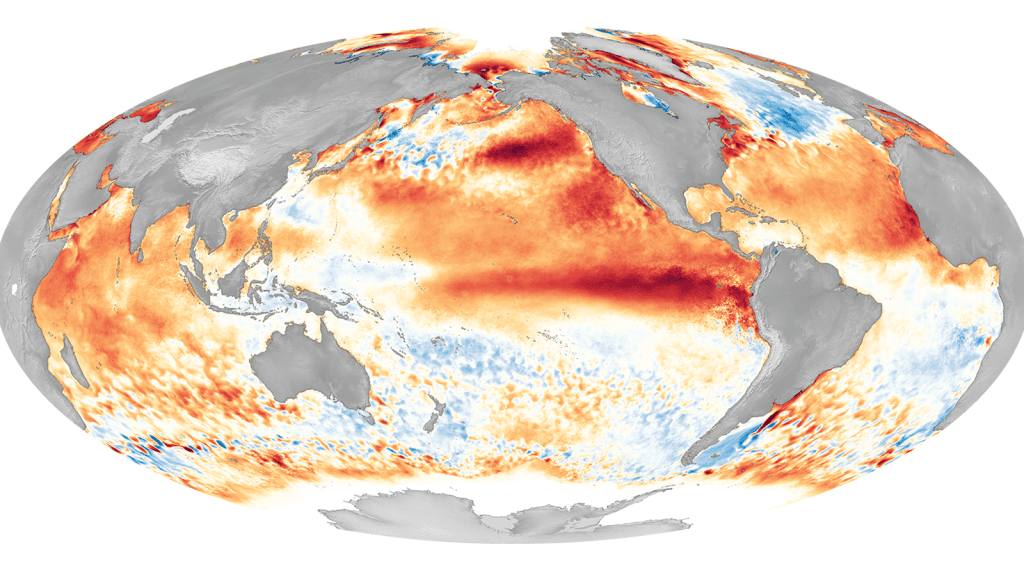Extreme hydroclimate events, such as droughts, floods, and heavy rainfall, account for a substantial portion of weather-related disasters in the United States, leading to significant socio-economic losses involving agriculture, water resources, and public health, among others. For instance, from 1980 to 2024, droughts were responsible for approximately $368 billion in economic losses for the United States, while inland flooding was responsible for $293 billion in damages. In a new study published in npj Climate and Atmospheric Science, scientists showed an increase in future winter extreme hydroclimate events in the United States, with extreme droughts becoming more common in the Southwest and extreme floods becoming more common in the Southeast and Northeast. The study found that these changes are fueled by increasing El Niño-Southern Oscillation (ENSO) impact and regional rainfall trends.

According to the National Integrated Drought Information System, the US has experienced a dramatic increase in extreme floods and droughts in the winter during the past several decades. Coincidentally, ENSO, a key driver of modulating US precipitation at an interannual time scale, has also increased in magnitude and is projected to continue increasing throughout the 21st century.
ENSO is a recurring climate pattern which is characterized by warm/cold sea surface temperature in the central and eastern tropical Pacific Ocean. The pattern shifts back and forth irregularly every two to seven years, bringing predictable changes to ocean temperatures and disrupting the normal wind and rainfall patterns across the tropics. ENSO is one of the most important climate phenomena on Earth due to its ability to change the global atmospheric circulation, which in turn, influences temperature and precipitation across the globe.

The arrival of El Niño (warming of the ocean surface) or La Niña (cooling of the ocean surface) in the tropical Pacific Ocean triggers a cascade of changes in tropical rainfall and wind patterns that echo around the globe. For the United States, the most significant impact is a shift in the path of the mid-latitude jet streams. These swift, high-level winds play a major role in separating warm and cool air masses and steering storms from the Pacific across the U.S.
For example, during La Niña, there is a poleward shift of the North Pacific jet stream (NPJ), which in turn decreases precipitation over the southern US, thus enhancing the likelihood of droughts. In contrast, during El Niño, the NPJ shifts south producing wetter-than-normal conditions over the southern US, thus increasing flood frequency in the region. Therefore, it is important to examine future changes in ENSO amplitude and the associated U.S. precipitation and extreme hydroclimate events to mitigate socio-economic losses.
Winter La Niña Pattern

Winter El Niño Pattern

These NOAA maps illustrate the typical impacts of El Niño and La Niña on U.S. winter weather. During La Niña, the Pacific jet stream often meanders high into the North Pacific and is less reliable across the southern tier of the United States. Southern and interior Alaska and the Pacific Northwest tend to be cooler and wetter than average, and the southern tier of U.S. states—from California to the Carolinas—tends to be warmer and drier than average. Farther north, the Ohio and Upper Mississippi River Valleys may be wetter than usual. During El Niño, these deviations from the average are approximately (but not exactly) reversed.
To better understand the relationship between ENSO and future extreme hydroclimate events in the US, scientists from NOAA’s Atlantic Oceanographic and Meteorological Laboratory (AOML), the Northern Gulf Institute (NGI), the University of Miami Cooperative Institute for Marine and Atmospheric Studies (CIMAS), and NOAA’s Geophysical Fluid Dynamic Laboratory (GFDL) performed a comprehensive analysis of the past and future precipitation, droughts, and floods over the entire United States.
In this study, scientists examined future changes in ENSO and its impacts on the US winter extreme hydroclimate events (e.g., drought and flood) by using a model called Seamless System for Prediction and EArth System Research (SPEAR). SPEAR was developed by NOAA GFDL as a next generation modeling system for seasonal to multidecadal prediction and projection. The study found that the growing influence of ENSO will increase the frequency of winter-season extreme floods and droughts in the US. The interaction between ENSO and the regional rainfall trends will lead to more extreme flooding events in some regions and more drought events in some other regions. Specifically, extreme droughts will become more common in the Southwest, enhancing risk for wildfires, whereas extreme floods will become more common in the Southeast and Northeast.
“Future U.S. extreme hydroclimate variability is not solely driven by the changing mean climate state; ENSO also plays a significant role and our study shows that its impacts on U.S. hydroclimate will increase significantly in the future. Therefore, to better project future U.S. extreme hydroclimate variability, it is important to study future changes in ENSO variability. Understanding ENSO variability is important and valuable because we can often predict its arrival many seasons in advance, giving us ample time to prepare for warning of its strongest impacts on weather and climate,” said Dongmin Kim, the corresponding author of the study and CIMAS scientist.
In 2024 alone, extreme events cost the United States $182.7 billion. Therefore, it is critical to improve our understanding of the drivers for US precipitation and associated extreme hydroclimate events to mitigate associated socio-economic losses.
Citation: Hong, JS., Kim, D., Lopez, H. et al. Projected increase in ENSO-induced US winter extreme hydroclimate events in SPEAR large ensemble simulation. npj Clim Atmos Sci 8, 84 (2025). https://doi.org/10.1038/s41612-025-00972-7
